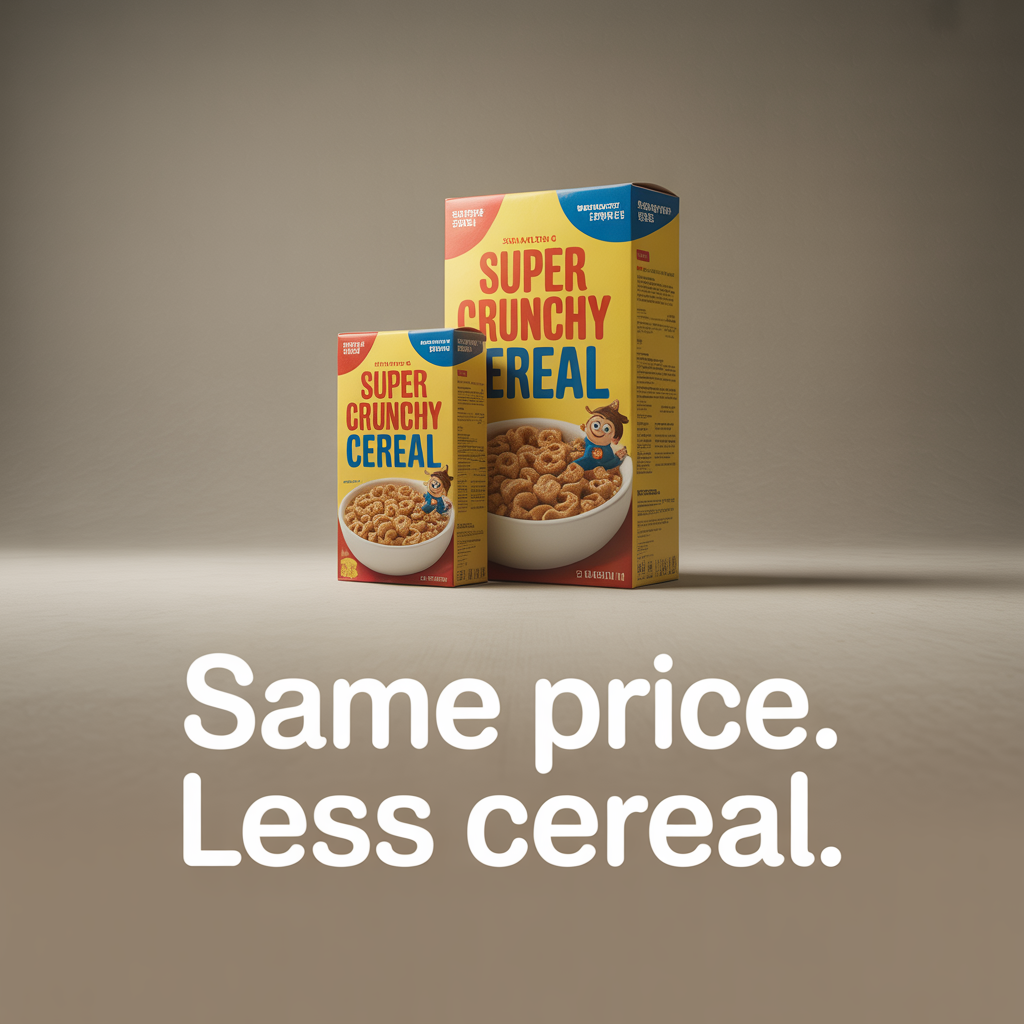It’s a feeling that’s become all too common. You open a new bag of potato chips and it seems half-empty. Your favourite chocolate bar feels a little lighter than you remember. The roll of paper towels runs out faster than it used to. You’re not imagining it. You’re experiencing “shrinkflation.”
This subtle tactic is reshaping store shelves and household budgets around the world. But what exactly is it, why is it happening, and what can you do about it? This is the full story on shrinkflation, a guide to understanding the hidden force changing what you buy.
What Exactly Is Shrinkflation?
In simple terms, shrinkflation is the practice of reducing the size, quantity, or even quality of a product while its price remains the same or increases slightly. Instead of raising the price of a carton of ice cream from $5.99 to $6.49, a company might instead reduce the container size from 2 litres to 1.8 litres, keeping the $5.99 price tag.
It’s a form of hidden inflation. While the sticker price hasn’t changed, the price per unit—the price per gram, per sheet, or per millilitre—has gone up. You are, quite literally, getting less for your money. This strategy is popular because research shows consumers are far more sensitive to a direct price increase than they are to a subtle change in net weight.
Why Do Companies Do It?
While it can feel deceptive, companies often turn to shrinkflation as a response to serious economic pressures. It’s rarely about simply increasing profits for its own sake; more often, it’s about protecting their profit margins from being erased entirely.
Key drivers include:
- Rising Input Costs: The price of raw ingredients, energy to run factories, and fuel for transportation can fluctuate dramatically. When these costs rise, companies have to either absorb the loss, raise prices, or find another way—like shrinking the product.
- Supply Chain Issues: Global events can disrupt the flow of goods, making it more expensive to produce and ship products.
- Maintaining Key Price Points: Certain price points are psychologically important for sales (e.g., $0.99, $4.99). A company will do everything it can to avoid crossing that threshold, and shrinking the product is one way to do it.
- Competition: If competitors aren’t raising their prices, a company that does so risks losing customers. Shrinkflation is seen as a less risky competitive move.
Is It Legal?
This is one of the most common questions, and the answer is usually yes. As long as the company accurately states the net weight or volume on the package, it is generally not breaking the law. For example, if a bag of coffee shrinks from 400 grams to 350 grams but the new packaging correctly lists “350g,” the company has met its basic legal obligation.
Where it can enter a legal grey area is if the packaging is deemed actively misleading—for example, using a large box with a false bottom to hide a much smaller amount of product. But for the most part, shrinkflation exploits a psychological loophole, not a legal one.
How to Be a Smart Consumer
Knowledge is power, and being aware of shrinkflation is the first step. The second is learning how to spot it.
- Become a Unit Price Expert: This is your single best tool. Look at the price-per-unit information on the shelf tag (e.g., price per 100g or per oz). This instantly tells you which product is truly the best value, regardless of its package size or sticker price.
- Trust Your Gut (and Your Hands): If a product you’ve bought for years suddenly feels lighter or the packaging has a new “swoop” or a bigger indent on the bottom, you’re likely seeing shrinkflation in action.
- Check Online Communities: You are not alone. Consumers around the world are tracking these changes. Online forums have entire communities dedicated to documenting examples of shrinkflation, which can help you stay informed.
The Bottom Line
Shrinkflation is a complex issue. It’s a strategic response to economic pressures, a legal business practice, and a frustrating experience for consumers trying to make their money go further. By understanding how and why it happens, and by focusing on real value rather than just the sticker price, you can navigate the modern marketplace with more confidence and ensure you’re truly getting what you pay for.

